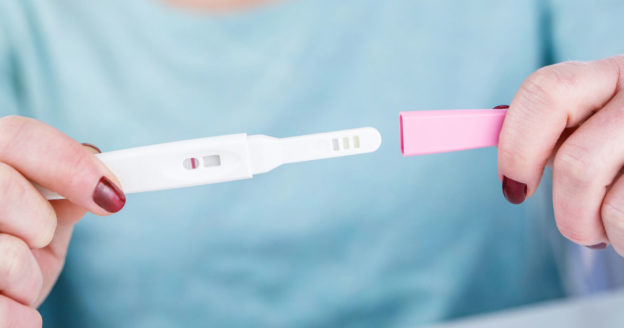Medical professionals define infertility as the inability to conceive a child after at least one year of attempts. Every woman is unique and will conceive best under different circumstances, but getting pregnant is much easier for some women than others.
A diagnosis of infertility can also apply to women who can successfully become pregnant but then miscarry. Overcoming infertility is sometimes possible with various treatments and modern fertility technology.
What Is Infertility: The Fertilization Process
It’s quite difficult to become pregnant, considering the exact chain of events that must occur for conception to happen:
- First, the woman must release a mature egg from one of her ovaries (called ovulation).
- Next, the egg must travel through the fallopian tube into the uterus.
- During this journey, a sperm cell from a male partner must come into contact with the egg and fertilize it.
- Finally, the fertilized egg must implant itself on the inner wall of the uterus.
Anything that interferes with any step of this process can cause infertility. Different medical conditions can interfere with ovulation, fertilization and implantation.
If the male partner is the root of the couple’s inability to conceive, methods including artificial insemination and embryo cultivation may prove effective. If the infertility is due to an issue with the female partner, there are many possible explanations.
Problems with Ovulation
Some medical conditions such as ovarian cysts can interfere with a woman’s ovulation cycle. If a woman’s ovaries cannot mature and release an egg during ovulation, cysts can form and block the process. In other cases, inflammation in the ovaries or the fallopian tubes can prevent proper egg release.
Physical problems with the uterus can also prevent ovulation, such as uterine fibroids. One of the first signs of an ovulation problem is irregular periods or missed periods. Abnormal uterine bleeding and inconsistent menstrual cycles can make conception more difficult.
Lifestyle Factors
A woman’s lifestyle has a tremendous impact on her ability or inability to conceive. Diet, exercise, stress and medical conditions all impact fertility in different ways. For example, a woman with a poor diet, stressful job and inconsistent sleeping schedule will likely have a difficult time becoming pregnant. Or, her body may reject a fertilization due to the woman’s poor health.
Other lifestyle choices such as tobacco use and alcohol consumption can interfere with pregnancy as well. The medical community has heavily discouraged smoking and drug use among pregnant women for decades because of the serious harm these things can do to both mothers and unborn babies.
For example, a baby born to a mother who consumed alcohol while pregnant may have fetal alcohol syndrome. A baby born to a mother addicted to opioids will likely be born addicted to opioids as well.
Finally, sexual activity can have a big impact on fertility. Sexually transmitted diseases can cause a host of fertility problems and damage the reproductive system in different ways. Although some people have believed in the past that certain sexual positions increase or decrease the chances of conception, there is little scientific evidence to support these theories.
Testing for Infertility
When a couple is struggling to become and stay pregnant, their doctor will need to perform an extensive series of tests to uncover the root of the problem. This process can be stressful and emotional, and it’s important to be patient while the doctor performs the necessary tests to reach a definite answer for your infertility.
Typically, fertility testing will begin with the male partner. Male infertility issues are easily detectable and almost always revolve around problems with sperm. The first male fertility test is usually a semen analysis to determine the man’s sperm count, quality and shape.
If the male partner shows no clear evidence of being the cause of infertility, the doctor will then examine the female partner. The first step is to determine if and when the female is ovulating. There are many different methods a doctor may use to calculate a female patient’s ovulation cycle.
Female fertility tests often involve various imaging procedures such as X-rays and ultrasounds, but may also include hysterosalpingography, a process of injecting a special dye into the vagina that spreads throughout the reproductive system. This makes it easier for the doctor to spot blockages, blood clots or anatomical problems preventing pregnancy.
Some women may require a laparoscopic inspection. During such a procedure, the doctor will use a laparoscopic tool inserted into an abdominal incision to inspect the reproductive system from the inside.
Treating Infertility
Some couples who are experiencing fertility issues can find a solution with simple lifestyle changes, medication or other easy methods. Other couples will require a more robust form of treatment.
Medical science has progressed to an incredible degree, and various techniques can help modern couples conceive more easily. Artificial insemination and other assisted reproductive technologies are tremendously successful for many couples.
Arizona Gynecology Consultants works with a vast network of trusted medical providers who have experience in handling all types of infertility issues. If you’re curious about solutions for your fertility concerns, reach out to us and ask about the resources and options available in your area.

Founder and Medical Director of ARIZONA GYNECOLOGY CONSULTANTS
Dr. Kelly Roy is a specialist in surgical gynecology and advanced laparoscopy (and hysteroscopy). She is a long-time resident of Arizona and obtained her Bachelor of Science degree in Biomedical Engineering at Arizona State University before finishing her Doctorate of Medicine at the University of Arizona in 1997.
Dr. Roy completed her residency in Obstetrics and Gynecology at the then “Banner Good Samaritan Hospital” (now Banner University Medical Center), in Phoenix Arizona in 2001.
Well known for her teaching and surgical ability, she is on the faculty at the residency program at both Banner University Medical Center and Saint Joseph’s Hospital in central Phoenix and is a Clinical Assistant Professor of Medicine at the University of Arizona College of Medicine, Phoenix Campus. Dr. Roy has taught advanced surgical techniques to medical students, residents, fellows and colleagues for over 15 years.
Dr. Roy is also a consultant to the medical device industry and has participated in the design and clinical testing of many instruments and surgical devices available on the world-wide market today.
Read More About Dr. Kelly Roy, MD | WebMD Profile | Health.USNews.com Profile | Current Obstetrics and Gynecology Reports: TFA with the Sonata System



